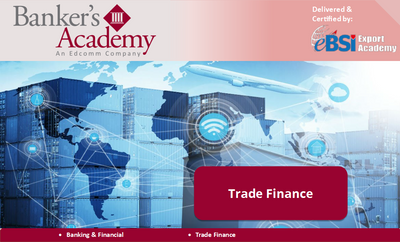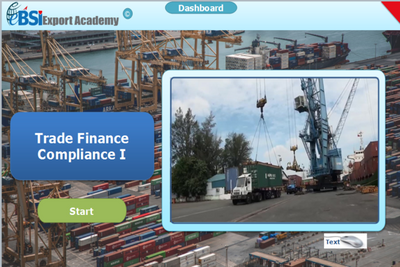Benefits & risks for banks in Supply Chain Finance

I have a Labrador dog, Andy whose breed originated in Greenland. I buy its food online in a store located in Germany whose product of Canadian origin is delivered directly to my house in Madrid, Spain thanks to TNT, a transport company of Australian foundation whose majority shareholder is the Dutch KPN; now that’s globalization!!
To survive in a so competitive world companies need to buy and sell goods in a very efficient way. Traditional systems – to buy raw materials using either the company‟s own funds or borrowed funds from a bank, process, sell and wait for the buyer‟s funds are not suitable any more.
Today‟s companies need a financing system nimble and flexible, adapted to their needs since, for international trade transactions, money is as vital as blood for life. One of these systems is the Supply Chain Financing (SCF) scheme. SCF it‟s a wide-ranging term that can be considered from several points of view:

From a management point of view, SCF means that the company receives the raw materials needed for its production in time and at the lower cost possible; arrange payments to its suppliers in a way that allows them to obtain the price easily and speedily but without being debited immediately into the company‟s bank account; and, convert into cash its receivables as soon as possible. An accurate SCF management allows the company to optimize its inventory, to prevent outages and to maximize its payment terms.
From a transactional point of view, SCF implies the use of an IT platform capable to interconnect buyers, sellers, the logistic company and the bank. Such platform may be provided by the bank, either using its own in-house developed software, purchasing any software license or through an agreement with a third-party provider. From a banking point of view, SCF represent for the banks an ideal opportunity to evolve from the role of a financial services provider to a non-replaceable business partner directly involved in the commercial and productive process of the company.
By participating in a SCF structure, a bank obtains a series of benefits
- Hold the different accounts necessary for a fast and efficient flow of payments;
- Benefits from the use of funds deposited in such accounts and obtain fees for the payments between the participants;
- Fees received for the use of the IT platform helps the bank to compensate the loss of revenues coming from traditional trade instruments (e.g. letter of credit) which the clients have substituted by an Open Account scheme;
- The bank may charge fees to the participants as a provider of the IT platform;
- Once the IT platform is available, the Bank can offer this service to different customers, making such an investment into a clear competitive advantage;
- Has a complete knowledge of the full operation of its clients, what implies a better understanding of their business;
- If necessary, the bank can grant funding to buyer or seller, depending on the case, enjoying the most accurate information about the operation he is funding and with the possibility of controlling the flow of funds;
- The bank has an excellent opportunity to attract the sellers as new customers and to make a cross-selling of its services; and,
- Through participation in a structure of SCF, the Bank demonstrates to markets its determined commitment by international trade, its capacity to adapt to new technologies and becomes a major player in this kind of activity within the reach of a small number of entities.
- In any SCF structure, the bank usually concentrates its risk on the buyer (who approves the invoices); therefore, it should be a creditable corporation enjoying a sound financial position;
- bullet SCF structures are suitable for high volume transactions held by trustworthy companies in developed countries;
- bullet Usually, the discount of approved invoices to the seller is on a non-recourse basis;
- bulletCompanies are willing to participate in a SCF structure when the payment terms are medium and/or long term;
- bullet Cost of providing the IT platform can be high and, unless a wide-scope agreement is previously reached with one or more highly reliable companies willing to participate in a SCF structure, it could be an unproductive investment;
- bullet Access of the companies‟ staff to the IT platform implies to design an appropriated authorization process in order to guarantee the safety of the whole operation;
- SCF involves not only financial transactions (discount of invoices, cash advances, loans, etc.) but commercial transactions as well (input of purchase orders, invoices approval, logistic documents, etc) which are not always well-known for the bank‟s staff;
In summary, we could say that SCF it‟s a modern structure that uses the advantages of new technologies and allows banks to participate directly in the day-to-day operations of their clients, adapting to the new challenges of the globalization.
The Global Warehouse Finance Program (GWFP), created in September 2010, aims to increase working capital financing to farmers and agriculture producers by leveraging their production

The International Finance Corporation recently established the Global Warehouse Finance Program to focus on this area.
The program will support the agriculture sector by providing banks with liquidity or risk coverage backed by warehouse receipts, which can be used to provide financing in the form of short-term loans or guarantees to agriculture producers and traders ahead of export.
The program has two components:
- Credit Line: IFC offers a short-term loan to a bank, which will in turn use the funds to lend to farmers, agriculture commodity producers, or traders against warehouse receipts or equivalent as collateral.
- Risk-Sharing Facilities: IFC guarantees up to 50 percent of short-term loans extended to agriculture commodity producers or traders against warehouse receipts or equivalent as collateral. Banks can transfer credit risk to IFC from their own portfolio or from a new portfolio they originate. The assets typically remain on the banks‟ balance sheet, and the risk transfer comes from a partial credit guarantee provided by IFC.
For more info email Makiko Toyoda MToyoda@ifc.org






